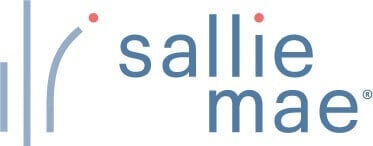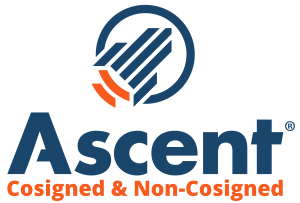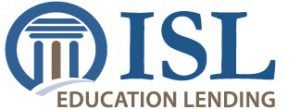
Flickr user Mike
Private student loans are a common way students cover the funding gap after exhausting their federal financial aid eligibility. While private student loans could help you get the funds you need to pay for college, choosing the right option is critical to minimizing your cost of borrowing.
Before you take out a private student loan, consider the questions below.
1. Have I exhausted my search for scholarships?
Scholarships are basically free money*!
To ensure that you’ve exhausted all avenues in your search for scholarships:
- Check community notice boards and the local newspaper.
- Ask local businesses if they are offering awards for residents of the community.
- See if your parents’ employers offer scholarships for dependents of their employees.
- Find out if your state offers scholarships to students who attend in-state colleges.
- Ask your high school guidance counselor.
- Use a scholarship search database to find scholarships that you qualify for.
2. Do I qualify for grants?
Grants are another type of gift aid that can help offset some of your college costs. Like scholarships, you don’t have to repay any money you receive through grants. Grants are offered by the federal government, state governments, colleges, and private organizations.
Like scholarships, there are generally qualification restrictions and requirements to keep the grants. Some grants may require the recipients to meet certain criteria for the award to remain as gift aid. If you are awarded such a grant and fail to meet the requirements, the award may be converted into a student loan that you must then pay back with interest.

3. Have I explored all my college options?
The colleges you are accepted to will likely offer you different awards making one school a more affordable option than the other. Using tools like College Raptor’s College Match Tool can show you which of your schools will give you the best deal.
Also if you want an out-of-state experience with in-state pricing, explore your home state’s tuition reciprocity programs. Tuition reciprocity programs offer discounted tuition fees for students who live in certain states relative to their home state giving you a wider range of affordable college options.
4. Have I fully explored Federal student loans?
Federal student loans have fixed interest rates that are typically lower than private student loans. To qualify for federal student loans, you will need to file the Free Application for Federal Student Aid or FAFSA.
The FAFSA could give you access to scholarships, grants, and institutional aid, all of which could add up to a substantial amount. Without filing the FAFSA, you aren’t eligible for those financial aid opportunities. Make sure to file for FAFSA and see how much financial aid you qualify for before applying for private student loans.
4. Is there any way I can cut back on the cost of room and board?
Room and board are the second biggest expense after college tuition. Cutting back on the cost of room and board makes more financial sense rather than taking on extra loans to fund a more luxurious lifestyle. Remember, you have to pay back all loans with accrued interest so the cost of room and board will be much higher than what it may seem.
Explore all the room and board options in and around campus and go for one that saves you the most money. Sharing an apartment off campus with a few other friends may work out cheaper than living in the dorm. In your own apartment, you’ll get to cook your own food too, saving you even more. The more you save, the less you will have to borrow by way of student loans.
5. Have you considered work-study?
Work-study is a great way to earn some money while you are still in college. It may mean putting in some long hours between working and studying, but if you can handle it, it could help lower the amount of student loans needed for college.
Work-study is an option offered by the federal government. You have to choose this option when filling out the FAFSA. It is usually only offered to students who meet certain qualifying criteria. You won’t earn enough to pay your tuition through work-study but your income can help offset some of your everyday expenses, which could reduce your need for student loans.
6. How much money do I need to borrow?
Private student loans could help bridge the gap if you still need funds after maximizing your gift aid and low-cost federal aid. How much money you need to borrow will depend on the cost of tuition, your personal finances, and the amount of federal financial aid you qualified for. Private student loans could help cover the shortfall.
Before applying for private student loans, review your expected expenses and calculate how much you need to borrow to pay for those expenses. Borrow only that much and no more.
7. What interest rate am I eligible for?
The interest rate on private student loans can vary from one lender to another. Private lenders determine your rate of interest based on your credit score, income, and other factors. Comparing lenders and interest rates is key to getting a loan with the best terms and conditions.
If you don’t qualify for a low rate, applying for private loans with a qualified cosigner could help. When you apply with a cosigner, the lender will take into consideration the cosigner’s credit quality and financial circumstances too.
8. When do repayments start on my loan?
Most lenders set repayments to start six months after graduation. This grace period is meant to allow you time to find a job and boost your finances before the bills come due. It’s a mistake to take this for granted though as the grace period can vary among lenders. Some may not offer a grace period at all, which means your repayments could start as soon as the funds are disbursed.
Finding out when repayments start is a critical factor in choosing a private student loan. You should know that although repayments start after the grace period, interest on the loans start accruing from the day you receive the money.
9. What will repayment look like?
Before you sign a contract with any private lender, make sure you understand the terms of the loan, the interest rates, repayment plans, how much you will have to pay back every month, and how long it will take you to repay the entire loan.
10. Are there any other ways I can reduce the amount I need to borrow?
We spoke about enrolling in a college with lower tuition and choosing room and board wisely as some ways to lower your private student loan debt. But there are also several other expenses associated with college. Making smart choices can help you cut down on the overall amount you’ll need to borrow. Some ways you can save include:
- Living at home and commuting to campus if your college is close to home.
- Buying second-hand textbooks or using eBook options. As you move on to the next year, sell your textbooks to recover some of the money you spent on them.
- Canceling unnecessary recurring subscriptions and limiting your nights out can help too.
- Working a flexible part time job.
All of these may entail making sacrifices but it’s worth it when you consider you’ll graduate with less student loan debt than your peers. Your future self will thank you.
Are you looking for private student loans to pay for college? Use College Raptor’s Student Loan Finder tool to quickly find and compare loans from reputed lenders and discover the best loan for you.
* While a scholarship does not have to be repaid, there may be other obligations associated with the scholarship.
| Lender | Rates (APR) | Eligibility | |
|---|---|---|---|
 |
5.34%-15.96%* Variable
3.99%-15.61%* Fixed
|
Undergraduate and Graduate
|
VISIT CITIZENS |
 |
4.92% - 15.08% Variable
3.99% - 15.49% Fixed
|
Undergraduate and Graduate
|
VISIT SALLIE MAE |
 |
4.50% - 17.99% Variable
3.49% - 17.99% Fixed
|
Undergraduate and Graduate
|
VISIT CREDIBLE |
 |
6.00% - 13.75% Variable
3.99% - 13.75% Fixed
|
Undergraduate and Graduate
|
VISIT LENDKEY |
 |
5.50% - 14.56% Variable
3.69% - 14.41% Fixed
|
Undergraduate and Graduate
|
VISIT ASCENT |
 |
3.70% - 8.75% Fixed
|
Undergraduate and Graduate
|
VISIT ISL |
 |
4.99% - 16.85% Variable
3.47% - 16.49% Fixed
|
Undergraduate and Graduate
|
VISIT EARNEST |
 |
5.00% - 14.22% Variable
3.69% - 14.22% Fixed
|
Undergraduate and Graduate
|
VISIT ELFI |


